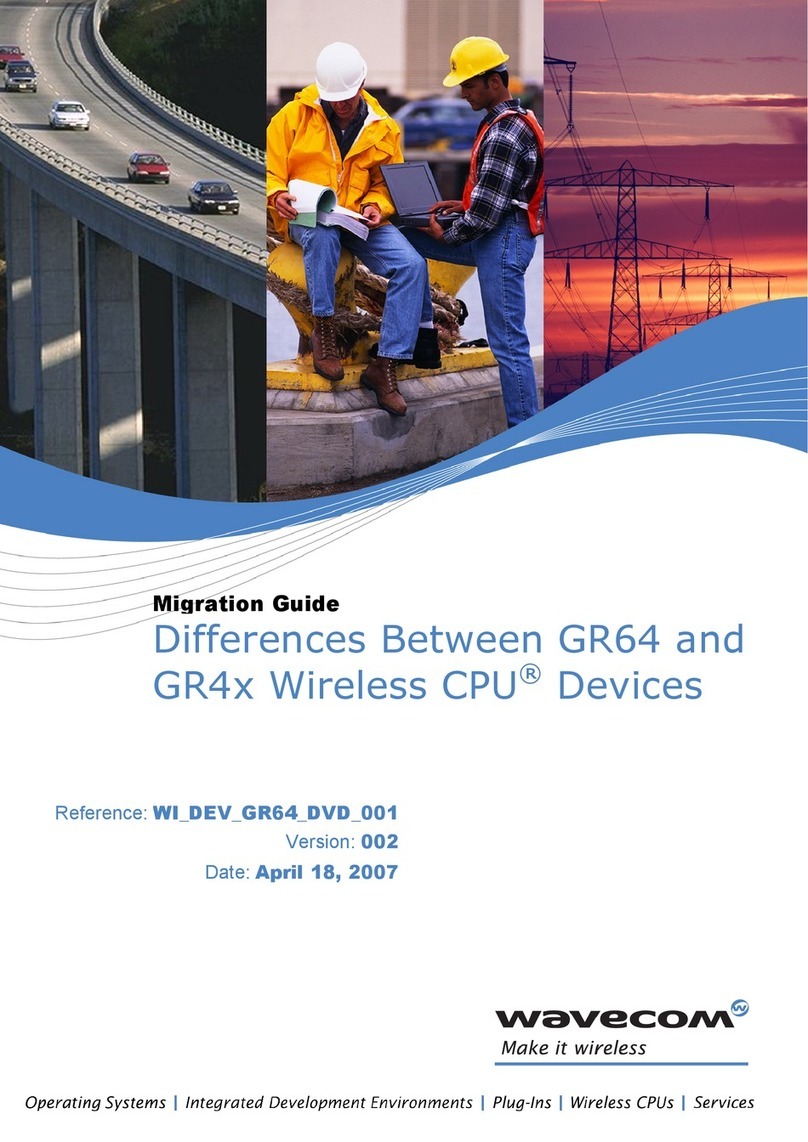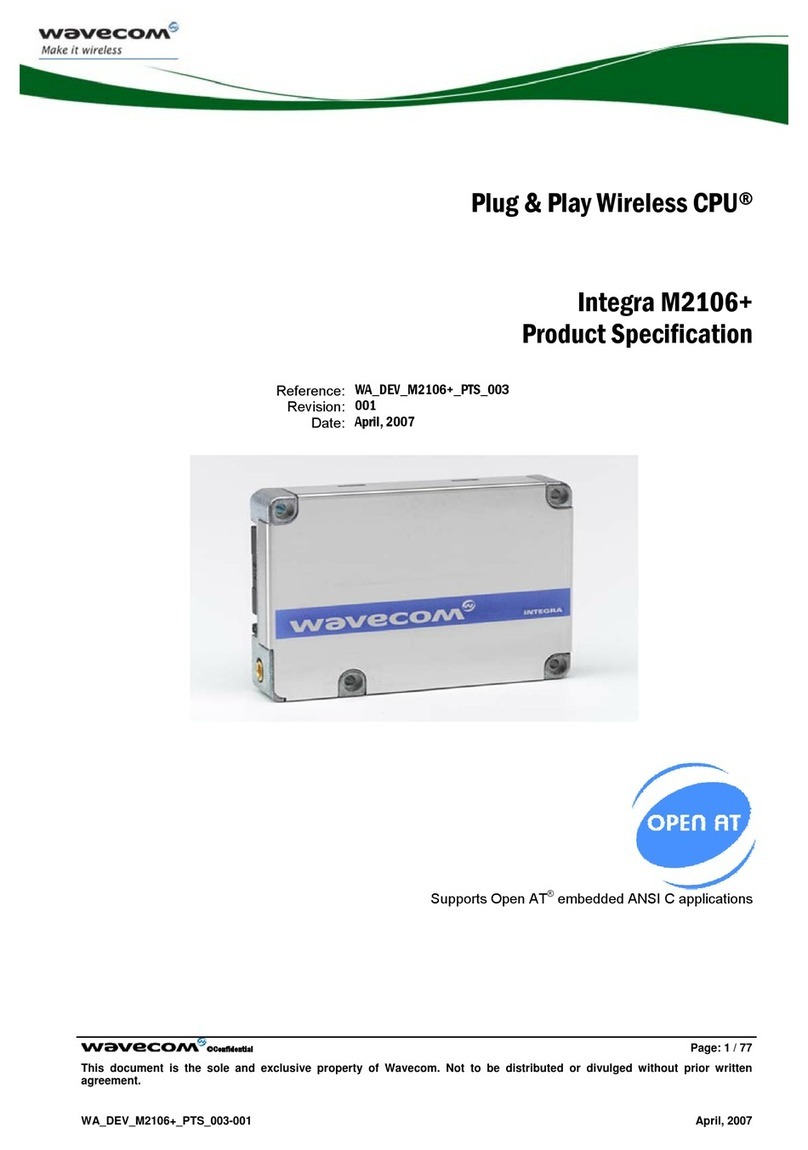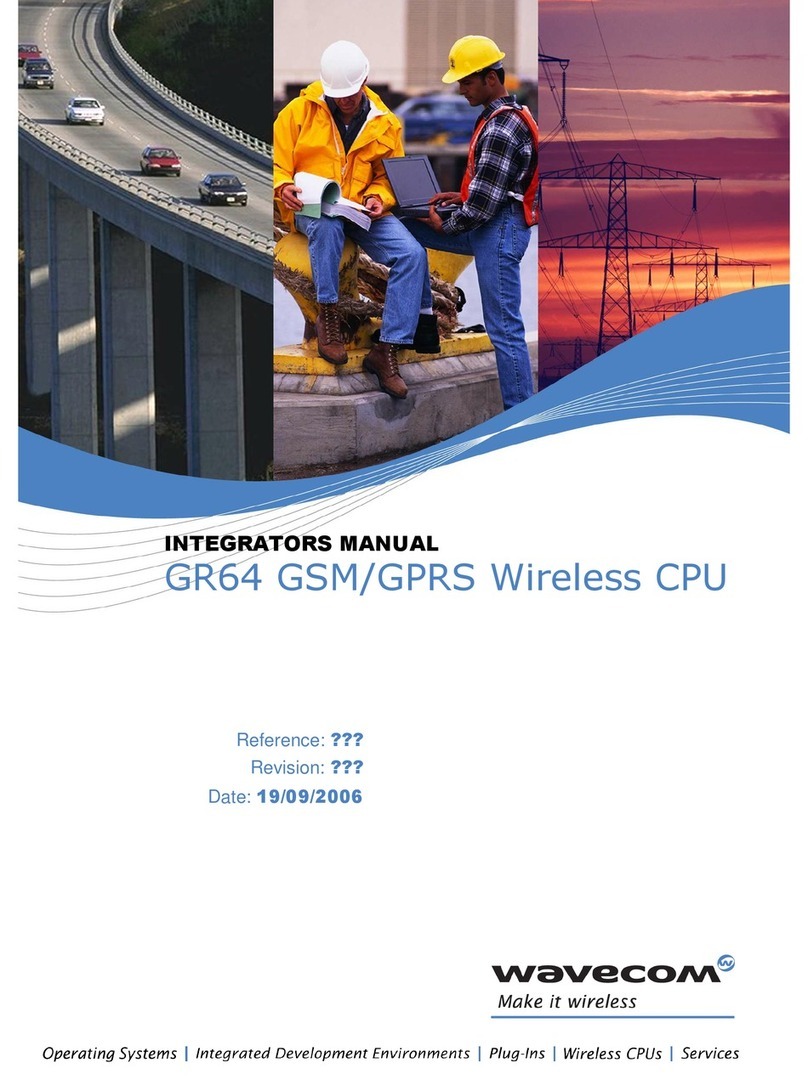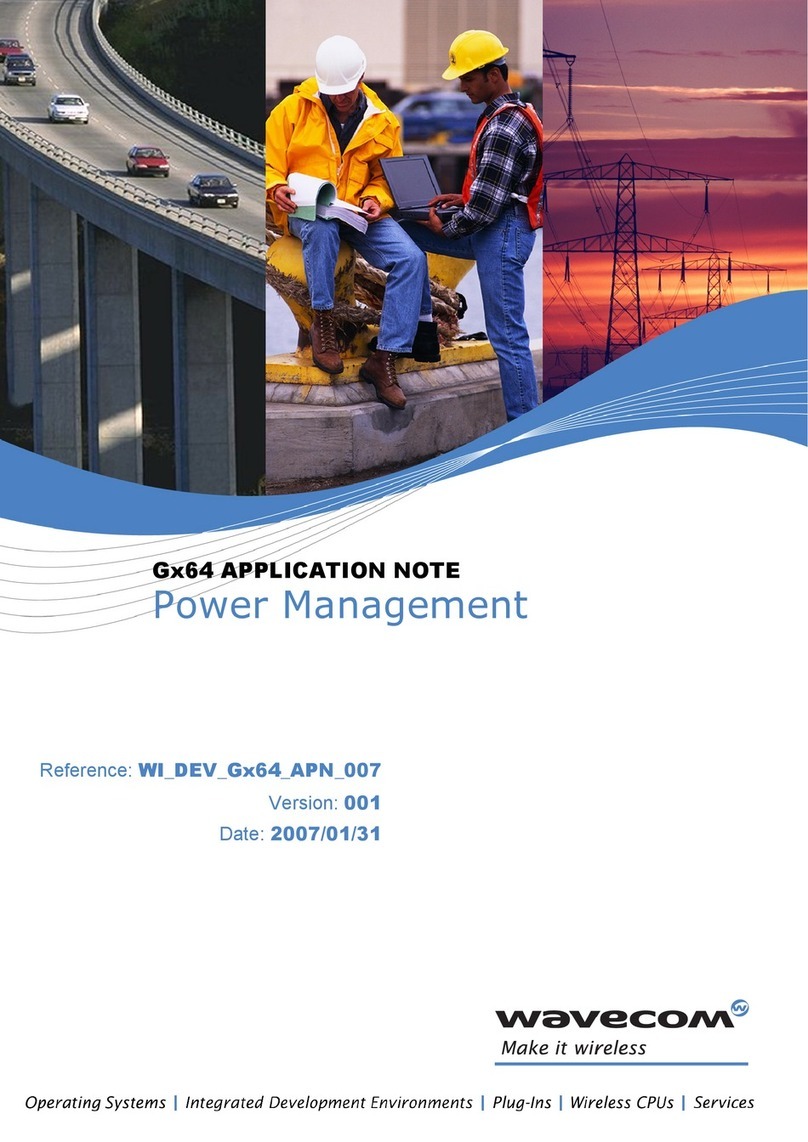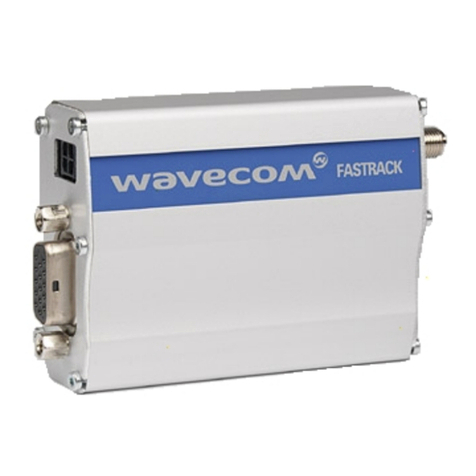
CM52 Integrators’ Manual
CM52 Integrators’ Manual
WI_DEV_CM52_UGD_001-001
Page 4 of 53
This document is the sole and exclusive property of WAVECOM. Not to be distributed or divulged without prior written agreement.
Ce document est la propriété exclusive de WAVECOM. Il ne peut être communiqué ou divulgué à des tiers sans son autorisation préalable
2.4.3 POWER CONSUMPTION................................................................................................ 23
2.4.3.1 VCC_MAIN SUPPLY POWER CONSUMPTION................................................................... 24
2.4.3.2 VCC_AUX SUPPLY POWER CONSUMPTION..................................................................... 24
2.4.3.3 POWER DOWN MODE (MINIMUM DC POWER CONSUMPTION) ........................................ 25
2.4.4 VREF SIGNAL DETAILS ................................................................................................. 25
2.5 REAL TIME CLOCK (RTC) CIRCUIT........................................................................................... 26
2.5.1 RTC INITIALIZATION.................................................................................................... 26
2.5.2 RTC FUNCTIONAL BLOCK DIAGRAM............................................................................. 26
2.6 AUDIO INTERFACE................................................................................................................. 27
2.6.1 DIGITAL AUDIO ........................................................................................................... 28
2.6.1.1 DATA FORMAT............................................................................................................ 28
2.6.1.2 TIMING ....................................................................................................................... 29
2.6.2 ANALOG AUDIO .......................................................................................................... 30
2.7 SERIAL DATA INTERFACE ....................................................................................................... 33
2.8 ANTENNA INTERFACE ............................................................................................................ 33
2.8.1 ANTENNA CONNECTOR............................................................................................... 34
2.8.2 RF OUTPUT POWER...................................................................................................... 35
2.8.3 CARRIER APPROVAL .................................................................................................... 36
2.8.4 ANTENNA DIAGNOSTICS ............................................................................................. 36
3Recommended Interface Circuitry................................................................... 38
3.1 STATUS GROUP RECOMMENDED CIRCUITRY........................................................................... 38
3.1.1 MODULE_PWR_EN_B .................................................................................................... 39
3.1.2 VREF ........................................................................................................................... 39
3.1.3 RI ............................................................................................................................... 40
3.1.4 HW_SD........................................................................................................................ 40
3.2 DATA GROUP RECOMMENDED CIRCUITRY.............................................................................. 42
3.2.1 VPPFLASH/DCD........................................................................................................... 42
3.3 PCM GROUP RECOMMENDED CIRCUITRY................................................................................ 43
3.4 ANALOG AUDIO GROUP RECOMMENDED CIRCUITRY .............................................................. 44
3.4.1 CREATING AN ANALOG GROUND................................................................................. 44
3.4.2 ANALOG GROUND VS. AGND....................................................................................... 45
3.4.3 MICROPHONE PATH .................................................................................................... 45












